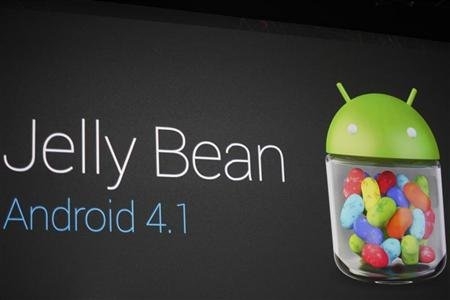Many Android smartphones and tablets, including the Samsung Galaxy S III and Google Nexus 7, are offering the latest Android operating-system update, version 4.1, Jelly Bean. Although Jelly Bean enhances many of the great features offered in Android 4.0, Ice Cream Sandwich, users should consider the new operating system more of an evolution than a revolution.
Smooth like butter
The first thing Google showed off when introducing Jelly Bean at the Google I/O event in June this year was Project Butter. As the name implies, Android users can expect Jelly Bean to be a whole lot smoother than previous versions. Transitions are silky smooth when scrolling between screens or pages, animations are slicker, and the touch response is generally improved. Cleverly, Jelly Bean knows when you’re touching the screen and speeds up your device’s processor, then slows it down when you’re not. Anyone who buys a Jelly Bean-powered device -- or updates an older model that is eligible -- should discover that his or her device is generally snappier and notice speed improvements throughout the Android system.
Nice new notifications
Android has always done a good job when it comes to notifications from various apps or services, requiring other software and hardware makers to constantly play catch-up. In Jelly Bean, notifications are even better, offering far more contextual information. The notifications are expandable and actionable. If you’re notified about a meeting, you can dismiss it right from the notification or even email other guests. Just missed a call? Jelly Bean lets you call or text someone back right from the pull-down notification.
Google Now is the here and now
Based on your personal Google search history, both on your device and when logged in to Google services elsewhere, Google Now helps inform you of events, activities, and more. It is location-aware and can tell you the weather in the morning, how the traffic will be on your commute, or how your favorite sports team is doing. Cards appear during the day, popping up from the bottom of the screen, and you can choose which ones you want to surface. They can track everything from flight delays to upcoming appointments, public transit schedules, and local currency rates, and they can even make suggestions of places to visit nearby.
The basic Google search functionality has been improved to take into account the power of Google’s Knowledge Graph, which shows Web results in a smarter way. Voice search and voice recognition are also better.
Fun with widgets and photos
When you add widgets to your home screen in Jelly Bean, the other shortcuts automatically move and shift, so it’s easy to find the best spot for the widget. In addition, many widgets will resize on their own to fit, or you can simply adjust them yourself.
The camera isn’t necessarily different on Jelly Bean, but sharing images is a whole lot easier. You can swipe from the camera to the film strip of photos to instantly view the images you just shot, and you can swipe away the ones you don’t like. Accidently deleted an image? With Jelly Bean it’s simple to undo the delete with a tap. Using Android Beam, you can share photos with another device just by bringing it close.
Built-in system and Google apps
Many of these improvements are subtle but indicate that Google is always tweaking its operating system under the surface to make things better. The People app, for example, helps you to organize your contacts, and there is a new algorithm to avoid duplication. It’s also possible to clear the “frequently called” list. When you miss a call, a new notification lets you return the call or reply by SMS with a single touch. The Calendar app is smoother, notifications are far more descriptive, and it’s easy to create your own default quick responses for emailing guests. There are subtle improvements to the built-in keyboard, too. These include more accurate dictionaries, better prediction and correction, and an easy way to switch languages.
The Google+ app has many improvements -- for example, you can now create and manage events directly from your device or see the live streams of all participants in the video Hangout. Gmail has seen improved notifications, while YouTube has gotten a slicker and more intuitive interface. Google Chrome takes advantage of Jelly Bean’s advanced rendering to improve responsiveness, while Maps adds support for offline viewing, built-in Zagat ratings, and even indoor walking directions. Fortunately, because these apps are available independently, even users with older versions of Android can take advantage of their latest updates and improvements.
So while Jelly Bean isn’t the massive sea change that Android users experienced when Ice Cream Sandwich was first released last year, it does improve on its predecessor significantly. It makes your device work more smoothly and responsively, and it patches up a few bugs and issues that emerged in previous operating systems.
Rumors are swirling that the next Android software release will be either 4.2 or 5.0, Key Lime Pie. Any sweetness will emerge from that tasty dessert is as yet unknown







